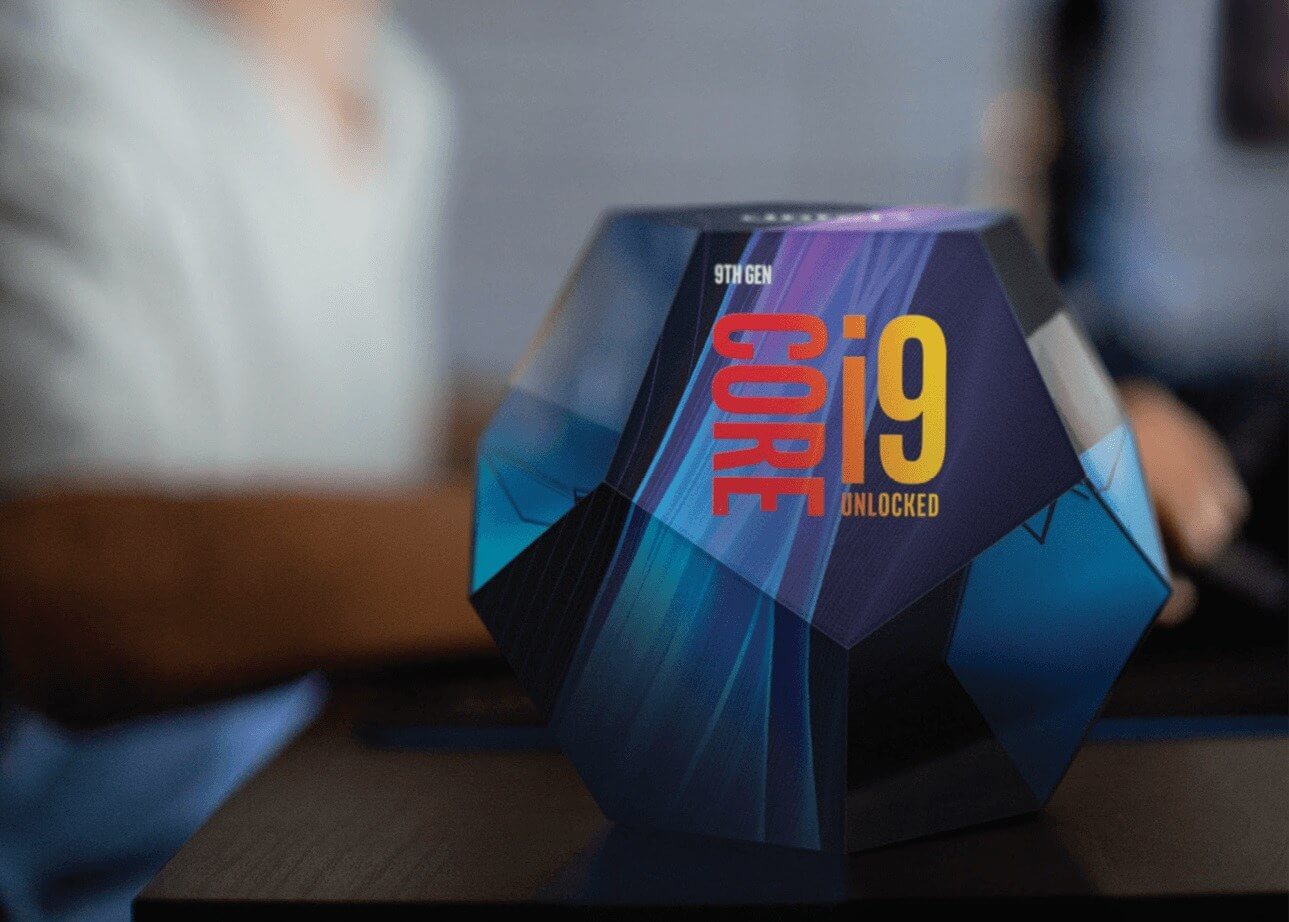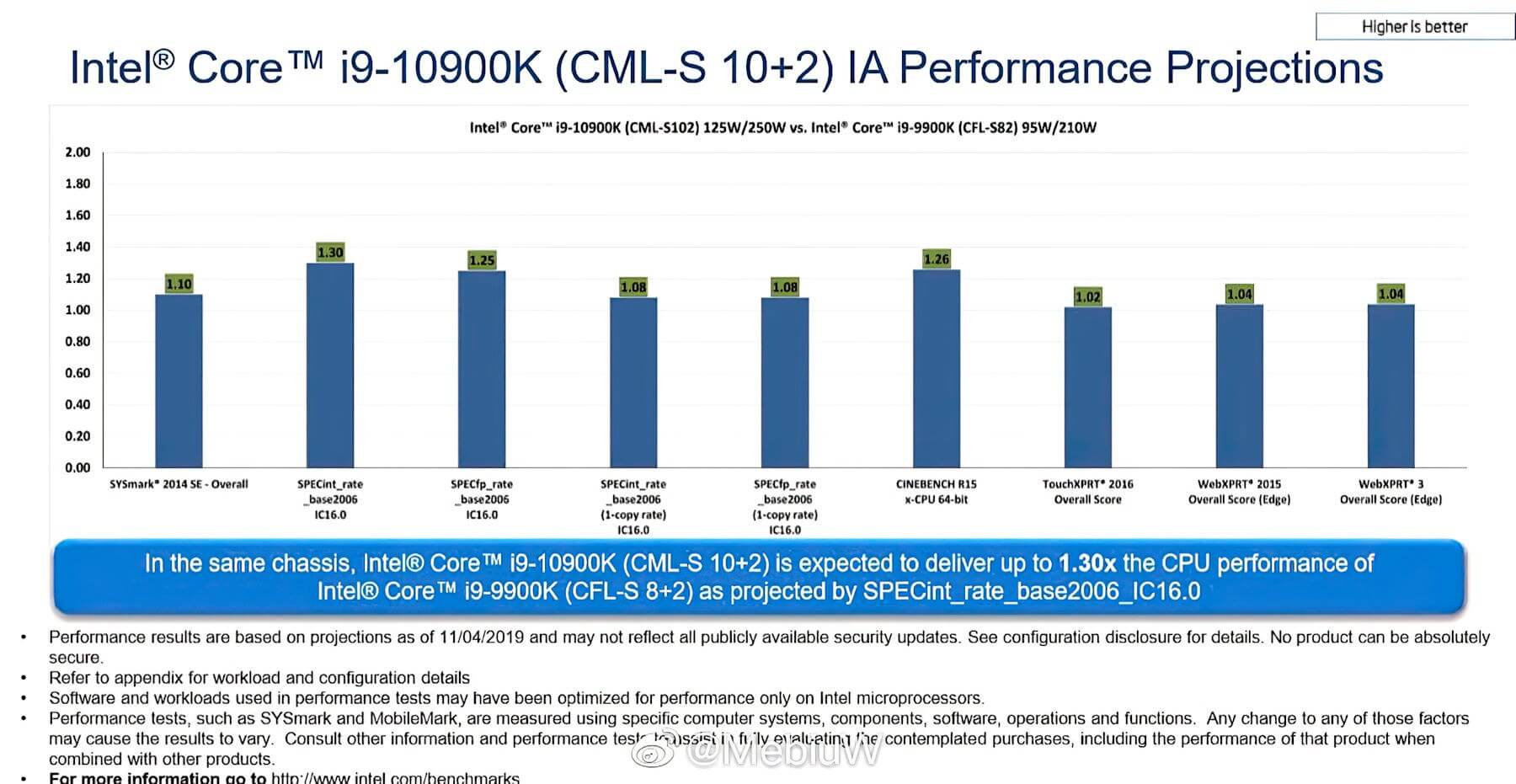Something to look forward to: We know that Intel’s 10th-generation Comet Lake chips are on their way, and they include the flagship Core i9-10900K. Now, what’s purported to be an internal document from Chipzilla has shown some of the official performance gains of the ten-core CPU.

The document comes from MebiuW, a Weibo forum user, via Tom’s Hardware. The main takeaway is that the 10900K is up to 30 percent faster than the 8-core/16-thread Core-i9 9900K in threaded workloads.
The upcoming chip was tested with single- and multi-core workloads in benchmarks, including SYSmark, SPEC, XPRT, and Cinebench. The biggest performance increase over its predecessor is seen in SPEC, where the 10900K has a 30 percent uplift, while there’s a 26 percent increase over the 9900K in Cinebench R15, thanks to its two extra cores.
Single-threaded performance increases aren’t as large, with the 10900K just 3 percent faster than the 9900K in XPRT. The new CPU uses the same 14nm process, though its maximum 5.3GHz core clock is higher than the older chip’s 5.0GHz.
While the 10900K has a 125W TDP, the results also list a 250W TDP. The latter is the chip’s PL2 power state, which is required for all cores to hit the turbo frequency.
Last week, slides that revealed Intel’s entire 10-gen series leaked online. They showed the 10900K with a base frequency of 3.7GHz and a boost of 5.1GHz, reaching 5.2GHz with Turbo Boost Max 3.0. And by using Thermal Velocity Boost, which requires a high-end cooling solution, the chip can hit a single-core frequency of 5.3GHz and reach 4.9GHz on all cores. It also has 20MB of cache, Enhanced Core and Memory Overclocking, and Active Core Group Tuning, while supporting DDR4-2933, Wi-Fi 6 and 2.5G ethernet.
With these results, it appears that Intel’s 10th-gen processors could face a challenge from AMD’s Zen 2-based Ryzen 3000, which offer better multi-threaded performance, if inferior single-core performance. And with the future Zen 3/Ryzen 4000 rumored to feature massive IPC gains, Intel could be looking at some tough times ahead.
We still don’t know when Intel's new CPUs will arrive but expect to learn more at CES.
https://www.techspot.com/news/83374-leaked-intel-document-shows-core-i9-10900k-30.html
